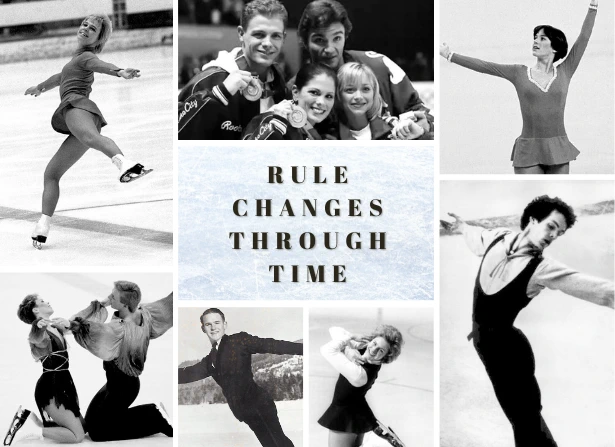
Ted Barton and Mark Hanretty take us through a brief look at the figure skating rule changes through time.
Figure Skating Rule Changes Through Time
The sport of Figure Skating has a rich history, and its rules have evolved significantly over time. Listen in as Ted Barton and Mark Hanretty take us back several decades to present!
What are your thoughts on the use of Artificial Intelligence (AI) for scoring elements? How do you feel about the change on the age limits? Do you think “repetition” influences judging? Share your thoughts in our comments section after watching the video!
Rules and regulations can change over time, often in response to evolving trends, technological advancements, and the desire to keep the sport engaging and fair for both athletes and audiences.
Early Days (19th Century): Figure skating originally emphasized graceful and intricate figures carved into the ice. Skaters were judged primarily on the quality of these figures, and jumps and spins were less prominent.
Introduction of Jumps and Spins (Early 20th Century): As figure skating gained popularity, skaters started incorporating jumps and spins into their routines. This led to a transition from figures being the main focus to a more performance-oriented approach.
Foundation of ISU and Standardized Rules (1892): The International Skating Union (ISU) was founded to regulate and standardize figure skating rules and competitions. This marked a turning point in the formalization of the sport’s rules.
Shift to Freestyle Skating (1930s-1940s): The sport started shifting towards more freestyle performances, where skaters showcased a combination of jumps, spins, and footwork. This era laid the groundwork for the modern competitive format.
Introduction of Compulsory Figures (1936-1990s): Compulsory figures involved tracing specific patterns on the ice to assess skaters’ control and precision. They were a significant part of competitions until they were gradually phased out in the 1990s due to their declining popularity.
IJS – Introduction of the International Judging System (2004): The International Judging System (IJS) was introduced to create a more objective and transparent scoring system. It evaluates elements like jumps, spins, footwork, and choreography, assigning points based on the quality and difficulty of each element.
Increased Emphasis on Artistry (2010s): The IJS placed more emphasis on the artistic components of skating, including choreography, interpretation of music, and presentation. This aimed to reward skaters for their overall performance and storytelling on the ice.
Changes in Scoring (Ongoing): The scoring system continues to evolve, with adjustments made to the value of different elements and the criteria for evaluating them. The goal is to ensure fairness and accuracy in scoring while encouraging skaters to push the boundaries of technical and artistic excellence.
